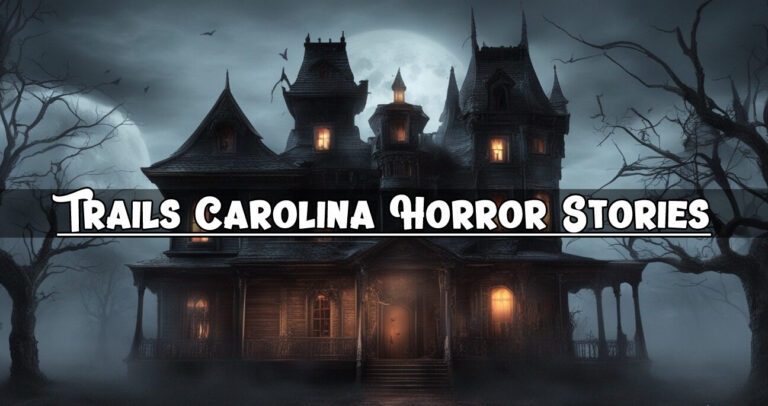Introduction
Trails Carolina, a wilderness therapy program located in the heart of North Carolina, has been a subject of controversy and concern. Intended as a therapeutic retreat for troubled teens, some have come forward with chilling stories that paint a starkly different picture. This article delves into these horror stories, unraveling the complexities and perils associated with wilderness therapy.
The Concept of Wilderness Therapy
Wilderness therapy, at its core, is designed to help troubled youths through structured outdoor experiences. Trails Carolina, like many such programs, claims to offer a transformative journey through nature, combining psychological counseling with physical challenges to foster growth and healing. However, the line between therapeutic challenge and traumatic experience can be thin and often blurred.
Horror Stories from the Trails
Numerous former participants of Trails Carolina have shared harrowing tales. These stories often include accounts of extreme physical exhaustion, mental breakdowns, and a feeling of being stranded or abandoned in the wilderness. Reports of inadequate food, harsh weather conditions without proper gear, and even allegations of emotional and psychological abuse have surfaced, painting a grim picture of what was supposed to be a healing journey.

The Psychological Impact
The impact of such experiences can be profound and long-lasting. Survivors talk about persistent nightmares, trust issues, and a deep-seated fear of abandonment. The intended therapeutic effect is overshadowed by trauma, leading to questions about the efficacy and ethics of such programs. Critics argue that the lack of regulation and oversight in wilderness therapy programs like Trails Carolina is a recipe for disaster.
Parents’ Perspectives
Parents drawn to these programs in hopes of finding help for their children often find themselves grappling with guilt and regret. Many were unaware of the potential risks and the severity of the conditions their children would face. The horror stories from Trails Carolina have left many parents questioning the decision-making process and the promises made by such therapy programs.
Regulatory Concerns
One of the significant issues with wilderness therapy programs is the need for consistent regulation and oversight. Trails Carolina, like many such programs, operates in a gray area where standard educational and therapeutic regulations do not always apply. This lack of oversight can lead to practices that are harmful and not in line with conventional therapeutic standards.
Survivors’ Advocacy and Calls for Reform
In response to these stories, a community of survivors has formed, advocating for reform in the wilderness therapy industry. Their efforts focus on increasing awareness, pushing for legislative changes, and offering support to those who have endured similar experiences. Their voices are crucial in the ongoing debate about the role and risks of wilderness therapy.

Evaluating the Therapeutic Model
Wilderness therapy, including programs like Trails Carolina, operates on a model that emphasizes self-discovery in a natural, challenging environment. Proponents argue that such settings foster resilience, independence, and personal growth. However, the horror stories raise critical questions about the balance between challenge and trauma. Effective therapy should support and nurture, not break down its participants. The model’s effectiveness is under scrutiny, particularly in how it’s implemented. Are the harsh conditions part of a calculated therapeutic strategy, or do they reflect a deeper problem in the understanding and execution of wilderness therapy?
The Role of Trained Professionals
A significant aspect of the Trails Carolina controversy revolves around the qualifications and training of staff. In wilderness therapy, the role of trained professionals is paramount. They’re not just guides in the wilderness but also custodians of young, vulnerable minds.
The horror stories often mention a perceived lack of adequately trained staff capable of handling the complex emotional, psychological, and physical needs of participants. This shortfall raises concerns about the hiring practices and training protocols within such programs, underscoring the need for stringent professional standards in wilderness therapy.
Legal and Ethical Implications
The narratives from Trails Carolina also bring to light legal and ethical considerations. Parents entrust these programs with their children’s safety and well-being, often based on the promise of a transformative experience. When this trust is breached, as alleged in these horror stories, it raises not only ethical questions but also legal ones.
The absence of strict regulatory frameworks in wilderness therapy allows for potential loopholes and grey areas, where accountability is often murky. Addressing these legal and ethical challenges is crucial for the future credibility and safety of wilderness therapy programs.
Moving Forward: The Need for Change
In light of the harrowing experiences shared by Trails Carolina alums, there is a clear and urgent need for change in the wilderness therapy industry. This includes stricter regulation, transparent operational practices, and a commitment to safety and ethical treatment. Programs must ensure that traumatic experiences do not overshadow therapeutic objectives.
Listening to survivors, incorporating their feedback, and learning from these stories are vital steps towards reform. The goal should be to transform wilderness therapy into a reliably safe and effective therapeutic option, one that genuinely aids in the healing and growth of its participants.

Conclusion
The horror stories from Trails Carolina are more than just tales of hardship; they are a stark reminder of the fine line between therapy and trauma. As wilderness therapy remains a contentious topic, it is crucial to listen to these stories, understand the implications, and strive for a system that genuinely prioritizes the well-being of its participants. Unveiling these shadows is the first step towards ensuring that therapeutic practices do more good than harm.

